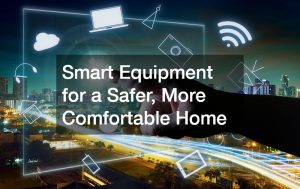As more content creators turn to video and streaming, the need for a reliable video capture card becomes increasingly essential. Video capture cards allow users to record video from various sources, such as cameras, game consoles, and computers. They come in two main types: internal and external, and both have pros and cons.
This article will explore the differences between internal and external video capture cards and provide insight into which type suits content creators of various skill levels. Learn more about these video capture devices and decide which is right for you.
What is a Video Capture Card?
What is a capture card? A video capture card is a device that allows you to record video from various sources, such as cameras, game consoles, and computers. It connects to the computer and can record video in multiple formats (such as MPEG-2, H.264, VC-1).
Video capture cards have various features, such as time-lapse recording, motion detection, and audio capture. Content creators often use them to capture high-quality video and stream it live. Many also use them in their production process, as a capture card can record video footage from various sources and then edit it together.
Video capture cards are designed to provide high-quality video. They can record video in various formats and resolutions, from full HD to 4K. They can also capture high-quality audio using built-in microphones or external audio sources. Compared to a webcam or other recording device, a capture card can provide higher-quality video and audio. This makes them ideal for streaming and content creation.
You will need a computer with compatible software to use a capture card. You can use a Windows PC, Mac, or even Linux to record video with the card. You may also need additional hardware, such as HDMI or USB cables.
Internal Video Capture Cards
One type of video capture card is internal. An internal video capture card will fit inside a computer, usually in an expansion slot on the motherboard. These are usually more expensive than external ones and can take advantage of the computer’s hardware for better performance. You won’t need any extra power supply or cables, as it will be powered directly from the computer.
The advantage of an internal video capture card is that it won’t take up any additional space. It will fit directly into the computer and won’t require any additional cables or power. However, if you’re using a laptop, you won’t be able to use an internal video capture card as most laptops don’t have any expansion slots.
To install an internal video capture card, open the computer and install it into a compatible expansion slot. This can be tricky, especially if you’re not familiar with computers. It’s also vital to ensure the card is compatible with your computer’s hardware and operating system.
Some of the most popular internal video capture cards include AVerMedia Live Gamer 4K (best overall), Elgato Game Capture 4K60 Pro Mk. 2 (best high-end), and the AVerMedia Live Gamer Duo (best for streaming).
External Video Capture Cards
The second type of video capture card is external. An external video capture card can be used with any computer, regardless of what kind of expansion slots it might have. It connects to the computer via USB, Thunderbolt, or PCIe and is powered from the computer’s ports.
The advantage of an external video capture card is that it’s easy to install and can be used with almost any computer. It also provides flexibility as you can move it around and use it with different computers. External video capture cards are usually cheaper than internal ones but won’t perform as well. These flexible cards are perfect for content creators on a budget and are constantly on the move.
Some of the most popular external video capture cards include Elgato HD60 X (best overall), Epiphan Systems Inc. AV.io 4K (best for gaming), and AverMedia Live Gamer Extreme 3 (best affordable).
Performance Comparison: Quality and Latency
The quality of a video capture card will depend on the type and resolution of the source, as well as the card itself. Internal and external video capture cards can record up to 4K resolution, but internal ones generally perform better. This is because they are powered directly by the computer and have more powerful hardware.
Latency is the time it takes for a video to be recorded, encoded, and sent to the viewer. Internal video capture cards generally have lower latency than external ones, as they don’t require extra cables, meaning the signal is sent directly to the device, making it faster. However, some external cards can also have low latency if connected to the computer via a high-speed connection like Thunderbolt.
If you’re a content creator, it’s essential to consider what type of video capture card you need. A professional streamer or content creator will need a capture card with higher quality and lower latency, which means they’ll likely be better off with an internal one. On the other hand, if you’re a hobbyist or just starting, an external video capture card will likely be more suitable and cost-effective.

Connectivity and Compatibility
Connectivity is an important consideration when choosing a video capture card. Internal cards typically connect directly to the computer’s motherboard, while external ones connect via USB, Thunderbolt, or PCIe. Both cards can be used with any computer if the appropriate ports are available.
Compatibility is another critical factor to consider. Internal cards need to be compatible with the computer’s hardware and operating system, while external ones need to be compatible with the ports available. But it’s important to ensure the card is supported by whatever software you’re using, as not all video capture cards work with all programs.
Internal video capture cards are typically compatible with laptops and desktop PCs running Windows or Mac OS. On the other hand, external cards can be used with laptops, PCs, game consoles, and other devices. Depending on your chosen card, it may be compatible with streaming services like Twitch and YouTube.
Ease of Use and Portability
The ease of setup and use depends on the type of card. Internal cards will require a bit more work, as you’ll need to open up the computer and install it into an expansion slot. On the other hand, external cards can be plugged in directly to the computer via a USB or Thunderbolt port and are generally easier to set up.
Regarding portability, external video capture cards are the winner. They’re small and can be easily transported from one location to another, but internal cards must stay inside the computer and can’t be taken with you on the go.

Price and Value for Money
Video capture cards come in various types and sizes, so the price range can vary significantly. Internal cards tend to be more expensive than external ones as they usually have better hardware and performance. Ranging from around $100 to over $400, depending on the quality of the card.
External cards are usually more affordable, ranging from around $50 to around $250. They’re an excellent option for content creators on a budget and don’t need the highest-end hardware. However, some external cards can also be expensive, depending on the features they offer. Some of the higher-end cards can rival internal ones.
Generally, professional streamers and content creators should opt for an internal video capture card, while hobbyists or those on a budget may be better off with an external one. This will depend on your needs and budget, but both types of video capture cards are great options for content creators.
Choosing the Right Video Capture Card for Your Needs
Factors to Consider
Cost
Of course, cost is a major factor to consider – internal cards are usually more expensive than external ones. However, if you have the budget for it, you may want to opt for an internal card as they generally have better performance and features.
Quality
The quality of the video capture card is important, as it will affect the quality of your video and audio. Internal cards usually perform better than external ones, but some higher-end external cards can also record high-quality footage. Look for a card that can record in 4K and has an improved audio capture.
Ease of use
Consider how easy the card will be to set up and use – internal cards are more challenging to install, while external ones can be plugged in directly. However, if you’re comfortable opening up your computer, an internal card can be more reliable and perform better.
Connectivity and Compatibility
For external cards, consider what kind of ports you have available. Some external cards can be used with USB, Thunderbolt, or PCIe connections. Ensure the card is compatible with your computer’s hardware and operating system for internal cards.

Conclusion
A video capture card can provide high-quality video and audio for streaming, content creation, and more. They may be internal or external, and both types have their advantages and disadvantages. Internal cards are more expensive and require installation, but they can provide better performance than external ones. External cards are cheaper and easy to use but may not perform as well as internal ones.
When choosing a video capture card, consider your budget, the quality you need, and how easy it is to set up. Internal cards are better for professionals, while external ones are a great option for those on a budget or just starting. Whatever card you choose, ensure it’s compatible with your computer and the software you’re using. With the help of a video capture card, you can take your content creation to the next level.




